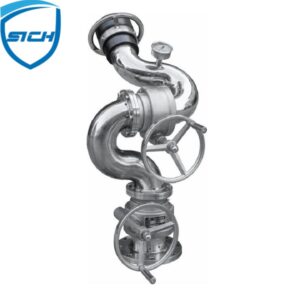Controlling the direction and angle of a water monitor fire can vary depending on the specific model and its features. However, modern water monitor systems are designed to be relatively easy to control for trained operators.
Here are some key factors that contribute to ease of control:
- Remote Control: Many water monitor systems are equipped with remote control capabilities, allowing operators to adjust the direction and angle of the monitor from a safe distance. This remote control functionality typically includes joysticks or other intuitive interfaces for precise control.
- Adjustable Mounting: Water monitors are often mounted on swivels or pivots, allowing for easy adjustment of the monitor’s direction and angle. This adjustability enables operators to quickly reposition the monitor to target different areas of a fire.
- Responsive Controls: The controls for adjusting the direction and angle of the water monitor are designed to be responsive, allowing operators to make rapid adjustments as needed. Smooth and precise control mechanisms enhance ease of use and accuracy.
- Feedback Systems: Some water monitor systems incorporate feedback mechanisms that provide operators with real-time information about the monitor’s position and orientation. This feedback helps operators make informed adjustments and maintain optimal firefighting effectiveness.
- Training and Familiarization: Proper training and familiarization with the water monitor system are essential for operators to effectively control its direction and angle. Training programs typically cover operation techniques, water monitor fire control interfaces, and safety protocols to ensure operators can confidently use the equipment in firefighting scenarios.
- Intuitive Design: Water monitor systems are often designed with user-friendly interfaces and intuitive controls to simplify operation. Clear labeling, standardized control layouts, and ergonomic design features enhance ease of use and minimize the learning curve for operators.
Overall, while there may be variations in specific control mechanisms and features among different water monitor systems, the goal is to provide operators with intuitive and responsive controls for effectively directing and adjusting the monitor’s spray in firefighting operations.
